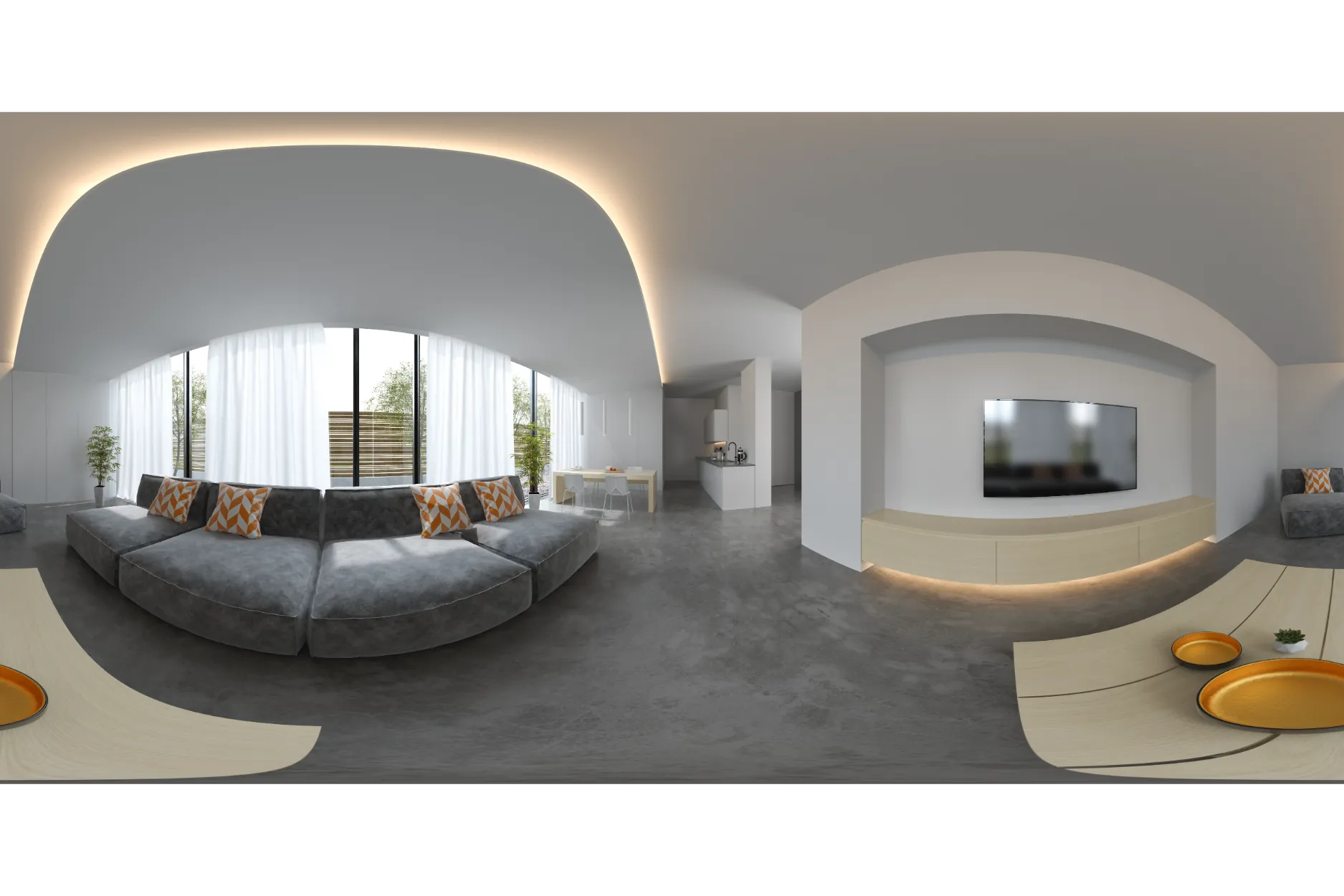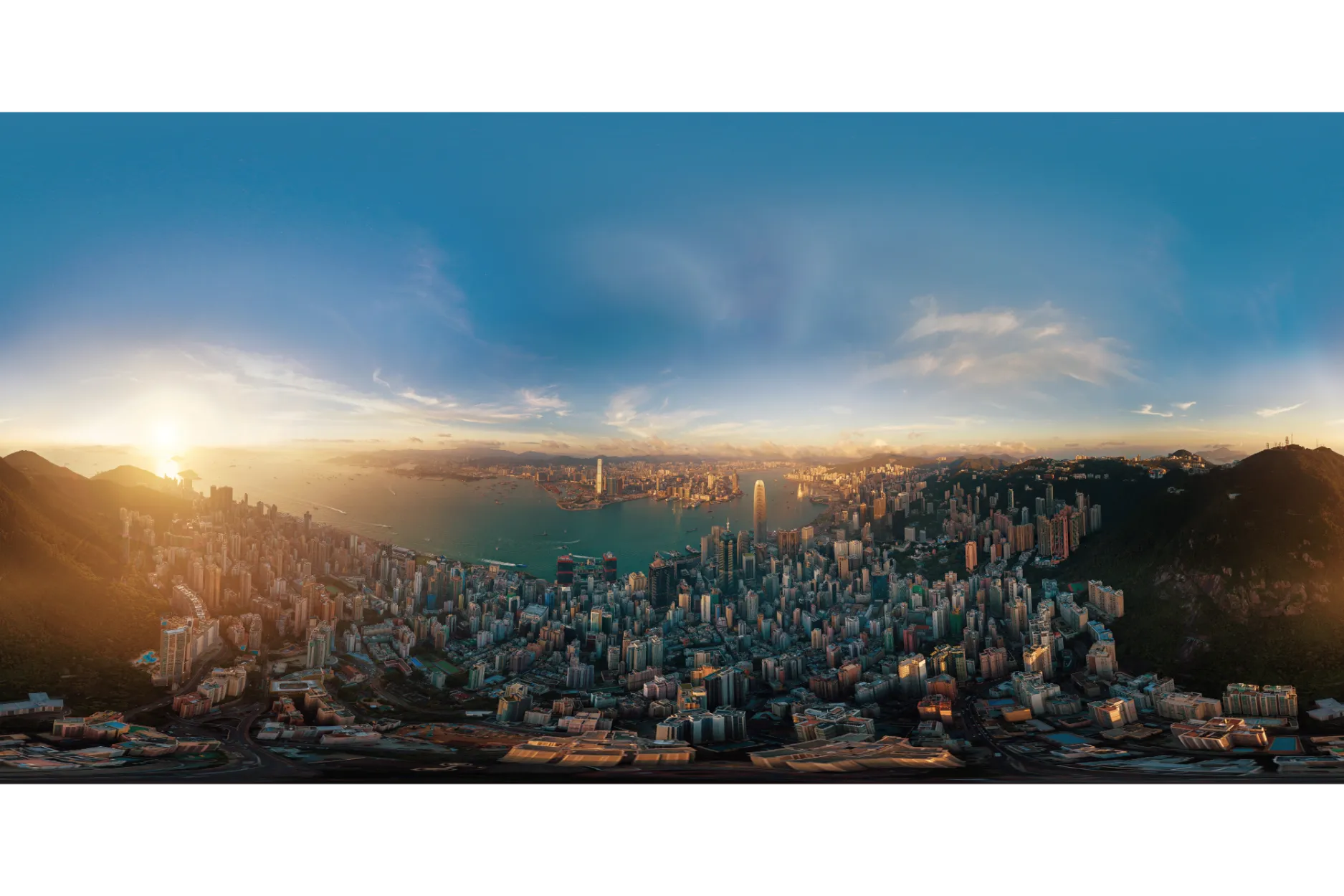
In the ever-evolving world of technology, new terms and concepts continuously emerge, often leaving us with questions about their meanings and applications. Panorama, 360 degrees, and Virtual Reality (VR) are three such terms that are frequently used interchangeably, yet they have distinct characteristics and applications.
To shed light on these differences, we'll delve into the world of interior design, exploring how each of these technologies is employed in creating immersive experiences. So, let's embark on a journey to understand the distinctions between panorama, 360 degrees, and virtual reality and discover how they play a pivotal role in shaping interior design.
What is Panorama?
Panorama, derived from the Greek words "pan" meaning "all" and "horama" meaning "view," is a wide, unbroken view of a surrounding area. In the context of technology and photography, a panorama refers to a wide, sweeping view of a landscape or scene. This term has been used for centuries to describe large-scale paintings that provide a broad and immersive visual experience.
Panorama in Interior Design
In the realm of interior design, panorama finds its application in creating stunning visual representations of interior spaces. It involves capturing a wide-angle view of a room or space, showcasing its entirety in a single frame. This technique is particularly useful for architects and interior designers as it allows them to present their designs in a more comprehensive and immersive manner.
Real-time Use in Interior Design
Imagine you are a potential homebuyer or a client looking to hire an interior designer. You come across a website featuring a beautiful home listed for sale or a portfolio of an interior designer's work. As you explore the space virtually, you encounter a panoramic view of the living room. This view enables you to see not only the furnishings but also the layout, the flow of natural light, and the overall ambiance of the room. It's like standing in the space without physically being there.
Panoramic images and virtual tours have become increasingly popular tools in the real estate and interior design industries. They allow prospective buyers or clients to get a better sense of a property's layout and design. This, in turn, can save time and effort for both the sellers and buyers, as it helps filter out spaces that do not align with the buyer's preferences.

What is 360 Degrees?
360 degrees, as the name suggests, encompasses the entirety of a view in all directions. It allows viewers to see not only what lies in front of them but also what's behind, above, and below. This term is commonly associated with panoramic photography and virtual tours, where a series of images or videos are stitched together to provide a seamless, all-encompassing view of a location.
360 Degrees in Interior Design
In the context of interior design, 360-degree imagery goes a step further than panoramas. It offers a complete view of a space, allowing viewers to look around in any direction, just as if they were physically present. This immersive experience can be a game-changer for architects, interior designers, and real estate professionals, as it provides a more interactive and engaging way to showcase their work.
Real-time Use in Interior Design
Let's return to our scenario of searching for a new home or evaluating an interior design proposal. This time, you come across a website featuring a 360-degree virtual tour of a property or an interior design project. As you navigate through the space, you can not only pan from side to side but also look up at the ceiling or down at the floor. You can explore every nook and cranny, getting a comprehensive understanding of the space's layout, design, and details.
360-degree virtual tours are becoming increasingly popular in the real estate market, as they provide potential buyers with a more immersive and interactive experience. For interior designers, it offers a powerful tool to showcase their work and engage clients. By allowing clients to virtually step into a designed space and look around, designers can elicit more immediate feedback and create a deeper connection with their clients.
What is Virtual Reality?
Virtual Reality (VR) takes immersion to the next level. It is a computer-generated simulation of a three-dimensional environment, which users can interact with using specialized hardware, such as VR headsets. VR aims to create a completely immersive experience, where users feel as though they have been transported to a different place or environment.
Virtual Reality in Interior Design
In interior design, VR has the potential to revolutionize the way designers and clients experience and interact with spaces. Using VR headsets, clients can step into a virtual version of a design proposal and explore it in detail. They can walk around, pick up objects, change colors, and get a true sense of what the final design will look and feel like.
Real-time Use in Interior Design
Imagine working with an interior designer who presents your project using VR technology. You put on a VR headset and find yourself inside a virtual representation of your future home. You can walk through the rooms, touch the furniture, and even look out of the virtual windows to see the view. This level of immersion allows you to make informed decisions about the design, ensuring that it aligns perfectly with your vision.
For architects and interior designers, VR offers a powerful tool for design visualization and client engagement. It allows designers to convey their ideas more effectively, reducing misunderstandings and ensuring that clients are fully satisfied with the proposed designs.
While panorama, 360 degrees, and virtual reality are distinct technologies with different levels of immersion and interaction, they can complement each other when used in interior design.
1. Panorama: Panoramic images provide a wide-angle view of a space, offering a quick and visually appealing overview. They are excellent for showcasing the aesthetics and general layout of a design.
2. 360 Degrees: 360-degree virtual tours take the viewer a step further by allowing them to explore a space from all angles. This level of interaction helps clients get a better understanding of the design's functionality and flow.
3. Virtual Reality: VR offers the most immersive experience, enabling clients to step into a virtual version of a design and interact with it as if it were real. It is ideal for fine-tuning details and ensuring that the design aligns with the client's preferences.
How Interior Designers Are Leveraging These Technologies
Today, forward-thinking interior designers are incorporating all three technologies into their design processes. They start with panorama shots to give clients a broad overview, then move on to 360-degree virtual tours for a more in-depth exploration. Finally, they use VR to provide clients with a fully immersive experience that leaves no room for ambiguity.
Incorporating these technologies not only enhances the design presentation but also streamlines the decision-making process. Clients can make more informed choices, leading to designs that better match their vision and expectations.
As technology continues to advance, the lines between panorama, 360 degrees, and virtual reality in interior design will continue to blur. The combination of these technologies will become increasingly commonplace, offering designers and clients unprecedented opportunities to collaborate and create spaces that are not just beautiful but also highly functional and tailored to individual preferences.
So, whether you're a homeowner looking to redesign your living space or an interior designer seeking to elevate your practice, keep an eye on these technologies. Embrace panorama, 360 degrees, and virtual reality as tools that can help you visualize, communicate, and realize the perfect interior design. After all, in the world of interior design, seeing truly is believing, and these technologies are here to make that belief a reality.
FAQs
VR enables clients to step into a virtual version of a design, interact with it, and make informed decisions, ensuring designs align with their preferences and vision.
360-degree imagery allows clients to virtually explore spaces from all angles, offering a more interactive and immersive experience, and facilitating better design decisions.
Panoramas are used to provide a wide-angle view of interior spaces, offering an encompassing visual representation of the design and layout.